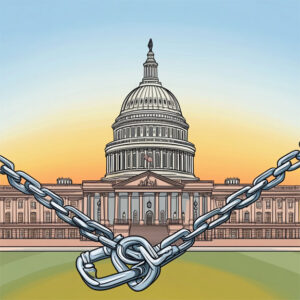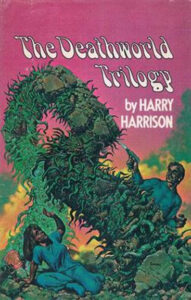 As a political tool, members of congress threaten or engage in a government shutdown. When the government is shut down, federal workers can be furloughed and sent home without pay and forbidden from working. Others, like TSA agents, can be compelled to work without pay. As the government shutdown does not shut down bills and expenses, the unpaid workers will be harmed by their lack of income. While some federal workers are well paid, many live from paycheck to paycheck and have few financial reserves. Because of this, some federal workers have turned to food banks during past shutdowns. In addition to the impact on workers, there are indirect impacts on those providing goods and services. After all, people who are not getting paid will be spending less.
As a political tool, members of congress threaten or engage in a government shutdown. When the government is shut down, federal workers can be furloughed and sent home without pay and forbidden from working. Others, like TSA agents, can be compelled to work without pay. As the government shutdown does not shut down bills and expenses, the unpaid workers will be harmed by their lack of income. While some federal workers are well paid, many live from paycheck to paycheck and have few financial reserves. Because of this, some federal workers have turned to food banks during past shutdowns. In addition to the impact on workers, there are indirect impacts on those providing goods and services. After all, people who are not getting paid will be spending less.
In addition to the financial impacts, there are other harms. One example is the national parks. There is also the harm suffered by those who need the federal services. There are also the long-term harms of the shutdown. While one could write almost endlessly of the harms of a shutdown, it suffices to say they are harmful and something that should be avoided.
Debating about who is to blame for any shutdown is often a fruitless endeavor because of the partisan divide. Minds will generally not be changed by evidence or reasons. That said, a shutdown requires both parties: if one party gives in to the other, then the shutdown will end. From a moral standpoint, both sides bear some blame. However, the blame need not be equal.
After all, refusing to give in to a threat to harm others can be morally acceptable. And it is usually the Republicans who make such threats. From a utilitarian standpoint, giving in would be wrong if it created more harm than refusing to do so. This utilitarian calculation can consider more than just the immediate factors. For example, it should also include that yielding to such tactics encourages their future use.
The ethics of the shutdown comes down to two moral concerns. The first is whether it is morally acceptable to hurt innocent people to get what you want. The second is whether it is morally acceptable to refuse to give someone what they want when they threaten to harm the innocent.
From a utilitarian standpoint, the matter is settled by weighing the harm against benefit. The benefits can include preventing harm. So, a shutdown would be morally acceptable if doing so prevented greater harm, since shutdowns are always harmful. What must also be considered is whether there is an alternative to the shutdown. To use an analogy, if someone proposed a risky surgery, failing to consider alternatives would be morally irresponsible. In the case of the shutdown, there are alternatives. One is to use a less harmful process of negotiation and for each side to agree they will not use the shutdown as a political tool.
One practical problem is that the shutdown is perceived as a useful, albeit risky, political tool. The side pushing a shutdown will think that it will probably work; the other side thinks they can keep it from working. Both sides think they can score political points. Using a shutdown as a tool requires ignoring or even not caring about the harm being inflicted on the American people. After all, while politicians can lose political points or not get what they want, they are not harmed by their shutdown. This willingness to use people as pawns is morally problematic, assuming you agree with Locke that the purpose of the state is the good of the people.
That said, political, economic and military calculations always involve harming pawns—so the shutdown could be seen as just another move in the political game. This can be countered by arguing that there are better alternatives, and so causing harm is not necessary. As such, the shutdown would seem to be an unethical political tool. Unfortunately, just as it takes two to shut down the government, it also takes two to avoid it: both parties must agree to not shut it down. But as long as it is seen as a viable tool and if politicians are willing to hurt Americans to achieve their political goals, then we must expect future shutdowns.

 The denotation of a word is what it literally means. The connotation is the emotional loading of the word, which can be negative or positive; this is how the word makes you feel. To illustrate, “swarm” and “infestation” have strong negative connotations. Whether the connotation is negative or positive depends on various factors, such as how the audience feels about the word. For example, the connotation of “socialism” is negative for most Americans but obviously positive to socialists. Two words can have the same denotation, but very different connotations. For example, the slang “pig” and the word “police” have the same denotation, but different connotations. As would be expected, rhetoric uses the influence of connotation to affect how people feel.
The denotation of a word is what it literally means. The connotation is the emotional loading of the word, which can be negative or positive; this is how the word makes you feel. To illustrate, “swarm” and “infestation” have strong negative connotations. Whether the connotation is negative or positive depends on various factors, such as how the audience feels about the word. For example, the connotation of “socialism” is negative for most Americans but obviously positive to socialists. Two words can have the same denotation, but very different connotations. For example, the slang “pig” and the word “police” have the same denotation, but different connotations. As would be expected, rhetoric uses the influence of connotation to affect how people feel. During Trump’s first term the United States
During Trump’s first term the United States  While the term “fascism” has been around since before WWII, its use has surged in recent years and is used across the American political spectrum. Both Bush and Obama were called fascists. Trump’s detractors and supporters regularly use the term on each other. But what is fascism?
While the term “fascism” has been around since before WWII, its use has surged in recent years and is used across the American political spectrum. Both Bush and Obama were called fascists. Trump’s detractors and supporters regularly use the term on each other. But what is fascism? Since most Americans find overt racism unpalatable, racist politicians and pragmatic exploiters of racism need to avoid it. However, they want to recruit and advance their agenda, so they need to express their racism while maintaining plausible deniability. The example I will focus on involves racism and migration.
Since most Americans find overt racism unpalatable, racist politicians and pragmatic exploiters of racism need to avoid it. However, they want to recruit and advance their agenda, so they need to express their racism while maintaining plausible deniability. The example I will focus on involves racism and migration. Some claim that “wokeness” (formerly “political correctness) has gone too far so that “you can’t say anything anymore.” As evidence people often offer examples of celebrities who faced some consequences for saying things that seem racist, homophobic or sexist. They also point to trigger warnings, safe spaces and when right wing speakers have been harassed or silenced.
Some claim that “wokeness” (formerly “political correctness) has gone too far so that “you can’t say anything anymore.” As evidence people often offer examples of celebrities who faced some consequences for saying things that seem racist, homophobic or sexist. They also point to trigger warnings, safe spaces and when right wing speakers have been harassed or silenced. When billionaires are criticized for their excess wealth, their defenders often point out that they are philanthropists. Bill Gates is famous for his foundation, Jeff Bezos has given millions to his charities, and the Koch brothers have spent lavishly on higher education and medical research.
When billionaires are criticized for their excess wealth, their defenders often point out that they are philanthropists. Bill Gates is famous for his foundation, Jeff Bezos has given millions to his charities, and the Koch brothers have spent lavishly on higher education and medical research. For years, Republicans have warned voters Democrats will take their guns. The Democrats have never done this. But back in 2019 Beto O’Rourke spoke the words long prophesized by Republicans:
For years, Republicans have warned voters Democrats will take their guns. The Democrats have never done this. But back in 2019 Beto O’Rourke spoke the words long prophesized by Republicans:  My adopted state of Florida, like many other states, is trying to address the problem of school shootings. Since the state legislature is not inclined to address the gun part of shootings, the focus has been on security: armed guards in schools, hardened facilities, cameras, monitoring social media, and software designed to collect and collate data on students. Having recently reread Harry Harrison’s sci-fi novel
My adopted state of Florida, like many other states, is trying to address the problem of school shootings. Since the state legislature is not inclined to address the gun part of shootings, the focus has been on security: armed guards in schools, hardened facilities, cameras, monitoring social media, and software designed to collect and collate data on students. Having recently reread Harry Harrison’s sci-fi novel  One the face of it, it is reasonable to think a mass shooter must have “something wrong” with them. Well-adjusted, moral people do not engage in mass murder. But are mass shooters mentally ill? The nature of mental illness is a medical matter, not a matter for common sense pop psychology or philosophers to resolve. But critical thinking can be applied to the claim that mass shootings are caused by mental illness.
One the face of it, it is reasonable to think a mass shooter must have “something wrong” with them. Well-adjusted, moral people do not engage in mass murder. But are mass shooters mentally ill? The nature of mental illness is a medical matter, not a matter for common sense pop psychology or philosophers to resolve. But critical thinking can be applied to the claim that mass shootings are caused by mental illness.